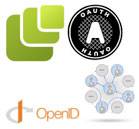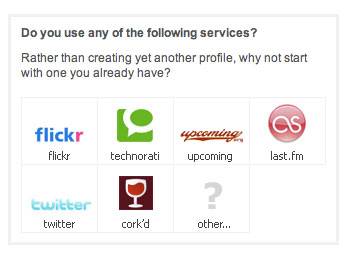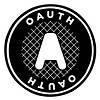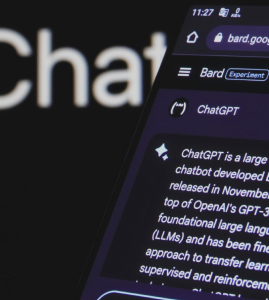Today Marshall Kirkpatrick interviewed Facebook CEO Mark Zuckerberg at SXSW, with the main topic of discussion being Data Portability. Later in the day at the festival, a star studded panel discussed building portable social networks. The panel highlighted four technologies that help make identity and data more portable across social networks: hCard; XFN and FOAF; OpenID; OAuth.

This post serves as an introduction to each of these technologies.
hCard: Providing Your Contact Information
Users are tired of repeatedly entering profile information over and over again. This problem is solved by the microformat hCard. Leslie Chicoine, an Experience Designer at Get Satisfaction, talked about how her company had created a sign up process for their web application using hCard. (see screen shot below)


XFN & FOAF: Who are your contacts
Another microformat, XFN, and the FOAF project are techniques for embedding relationships in links. This allows social networks to recommend contacts that should be shared, without scraping web based email clients. Recently, Google introduced a Social Graph API, which “index[es] the public Web for XHTML Friends Network (XFN), Friend of a Friend (FOAF) markup and other publicly declared connections”.

Something very interesting that I wasn’t aware of until today’s panel was that both Plaxo & Six Apart were working on something similar before Google announced OpenSocial, according to Joe Smarr and David Recordon. However, once Google started focusing on this they were happy to hand it over to them – because Google “has the web on a hard drive”, so it makes the crawling component of this far less difficult. For a good overview on Google’s Social Graph API, check out the following introductory video:
OpenID: Authenticating Individuals
OpenID is a decentralized framework for allowing social networks (and other web applications) to authenticate users. In other words, it lets users login using shared credentials across different services. It also allows individuals to decide what information they want to share with each application. For example, a user might decide not to provide their postal or email address.

OAuth: Authorizing Access
The final protocol discussed was OAuth. It is a protocol that is less about authentication (OpenID) and more about authorization. The protocol has been developed over the last year. The specification was released in December 2007 and modeled off a number of authorization protocols, including the Flickr Authorization protocol. According to Chris Messina, a number of services have already started using it including:

- Fireeagle
- Open Social
- Pownce
- Get Satisfcation, and
- Magnolia
- (and Twitter support will be coming soon)
Chris also pointed to a comment in a recent post of ours about email passwords, that highlighted the need for tools like these. Also there was a comment on RWW from Oren Michels at Mashery, indicating it is the most requested feature for them right now.
Conclusion
Securely moving your data around the web has increasingly become an important concept on the web. Arguably, it was the most discussed meme at this year’s SXSW. While not an application, you could say it has been ‘this year’s Twitter‘.

The Data Portability group deserves credit for educating the market. Beyond that, it is also an idea whose time has clearly come. It is interesting to think what applications will be built on top of these portability standards – they might be popular by next year’s SXSW!

















